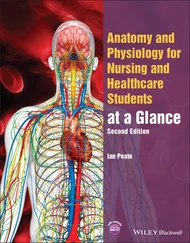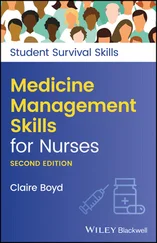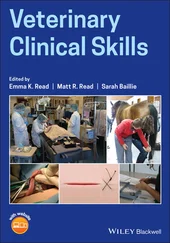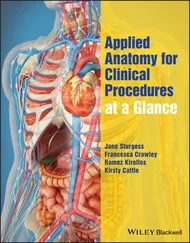1 Cover
2 Title Page
3 Copyright Page
4 List of contributors
5 Acknowledgement
6 About the companion website
7 Part 1: 1 Introduction References
8 Part 2: Principles of skills 2 Care planning and the nursing process Background Influencing Factors Professional Approach Equipment Procedure – Assessment Procedure – Diagnosis Procedure – Care Planning Procedure – Implementation Procedure – Evaluation Red Flag References 3 Communication – fundamentals Background Influencing Factors Professional Approach Procedure: Verbal Communication Procedure: Non‐verbal Communication Written Communication Red Flags References 4 Record keeping Background Influencing Factors Professional Approach Equipment Procedure – Standard Documentation Procedure – Writing a Statement Red Flag References 5 Communication – de‐escalation Background Influencing Factors Professional Approach Equipment Procedure Red Flag References 6 Communication – difficult conversationsBackground Professional Approach: Preparing Your Self Influencing Factors: What Conversations Might Be Considered Difficult? Influencing Factors: Requisite Qualities and Skills Procedure: Breaking Bad News Procedure: Be PREPARED Procedure: Balancing Hope and Realism References 7 Informed consent Background Influencing Factors Professional Approach Equipment Procedure – Informed Consent Red Flag References 8 Privacy and dignity Background Influencing Factors Professional Approach Equipment Procedure – Key Considerations Procedure – Social Media Red Flag References
9 Part 3: Mandatory skills 9 Moving and handling Background Influencing Factors Procedure – Key Points to Remember Professional Approach Moving and Handling Techniques Red Flags References 10 Moving and handling Background Influencing Factors Professional Approach Equipment Procedure – Turn in Bed Procedure – Moving in Bed Using a Slide Sheet Procedure – Lateral Transfers Procedure – Hoisting Red Flags References 11 Basic life support Background Influencing Factors – Chain of Survival Professional Approach Procedure – Basic Life Support Procedure – Automated External Defibrillators Signs of Regaining Consciousness Red Flags References 12 The choking patient; the recovery position Background Professional Approach Procedure – Choking Assessment Procedure – Back Slaps (5) Procedure – Abdominal Thrusts (5) Recovery Position Red Flags References 13 Infection control Background Influencing Factors Professional Approach Professional Approach – Dress Code Procedure – Hand Hygiene Procedure – Hand Washing Procedure – Use of Hand Rubs Personal Protective Equipment Procedure – Waste Disposal Isolation Red Flags References 14 Medicine management Background Pharmacodynamics and Pharmacokinetics Professional Approach Procedure Controlled Drugs Classes of Medication Medication Supplying Methods Self‐administration Patient‐specific Medications Patient Group Directions Key Legislation in Medication Administration Red Flags References 15 Injection technique Background Professional Approach Influencing Factors Equipment Procedure Procedure – Which Intramuscular Site Red Flags References 16 National early warning score (NEWS) track and trigger system Background Professional Approach Influencing Factors Equipment Procedure Red Flags References
10 Part 4: Neurological skills 17 Assessing level of consciousness Background Influencing Factors Professional Approach Equipment – The ACVPU Tool Equipment – Glasgow Coma Scale Procedure Red Flags References 18 Assessing pupil reaction and limb strength Background Influencing Factors Professional Approach Procedure – Assessing Pupil Reactivity Score Procedure – Assessing Limb Strength Red Flags References 19 Assessing cognition Background Influencing Factors Professional Approach Equipment – MMSE Procedure – MMSE Equipment – CAM – Short Form Procedure – CAM – Short Form Equipment – The Mini‐Cog Procedure – The Mini‐Cog Red Flags References 20 Pain assessment Background Influencing Factors Professional Approach Equipment – All Scoring Systems Procedure – Self‐Assessment Scale Procedure – PQRST Pain Assessment Procedure – Assessing Pain in Individuals with Reduced Cognition Red Flags References 21 Neurovascular assessment Background Influencing Factors Professional Approach Equipment Procedure Red Flags References 22 Assessing and managing seizures Background Influencing Factors Professional Approach Equipment – Managing all Seizures Procedure – Generalised Tonic‐Clonic Seizure Procedure – Status Epilepticus Procedure – Focal Seizures and Absences Red Flags References
11 Part 5: Respiratory skills 23 Assessing and managing the airway Background Influencing Factors Professional Approach Equipment Procedure – Assessing the Airway Procedure – Managing the Airway Procedure – Inserting an Oropharyngeal Airway Red Flags References 24 Respiratory assessment Background Influencing Factors Professional Approach Equipment Procedure – Inspection Procedure – Sputum Assessment Procedure – Assessing Respirations Red Flags References 25 Monitoring oxygen saturations Background Influencing Factors Professional Approach Equipment Procedure Red Flags References 26 Arterial blood gas analysis Background Influencing Factors Professional Approach Equipment Procedure – ABG Sampling Procedure – ABG Analysis Red Flags References 27 Chest auscultation Background Influencing Factors Professional Approach Equipment Procedure Red Flags References 28 Peak expiratory flow rate Background Influencing Factors Professional Approach Equipment Procedure Red Flags References 29 Administering oxygen Background Influencing Factors – Indications for Oxygen Therapy Professional Approach Equipment Procedure Red Flags References 30 Nebulisers and inhalers Background Influencing Factors Professional Approach Equipment – Inhaler Equipment – Nebulisation Procedure – Administering a nebuliser Procedure – Administering a Nebuliser Red Flags References 31 Tracheostomy care Background Influencing Factors – Indications for a Tracheostomy Influencing Factors – Complications Associated with Tracheostomies Professional Approach Equipment – Tracheostomy Tubes Procedure – Tracheostomy Care Procedure – Communication Procedure – Nutrition Procedure – Suctioning Red Flags References 32 Chest drain management Background Influencing Factors Professional Approach Procedure – Chest Drain Management Equipment – Chest Drain Removal Procedure – Chest Drain Removal Red Flags References
12 Part 6: Cardiovascular skills 33 Taking a pulse Background Pulse Sites Influencing Factors Professional Approach Equipment Procedure Interpreting a Pulse Red Flags References 34 Blood pressure Background Influencing Factors Equipment (Figure 34.1) Procedure – Manual BP Procedure – Electronic BP Professional Approach Red Flags References 35 Temperature assessment Background Influencing Factors Professional Approach Equipment Procedure Red Flags References 36 Non‐invasive circulatory assessment Background Influencing Factors Professional Approach Equipment Procedure – Peripheral Assessment Procedure – CRT Interpreting Results Red Flags References 37 Central venous pressure monitoring Background Influencing Factors Professional Approach Equipment – CVC Monitoring and Site Care Procedure – CVP Monitoring Procedure – CVC Removal Red Flags References 38 Electrocardiogram Background 12‐Lead Electrocardiogram (ECG) Influencing Factors – ECG Indications Professional Approach Equipment Procedure Procedure – 3‐Lead ECG/5‐Lead ECG Red Flags References
13 Part 7: Gastrointestinal skills 39 Nutritional screening Background Influencing Factors Professional Approach Equipment Procedure – Initial Assessment Procedure
Читать дальше












